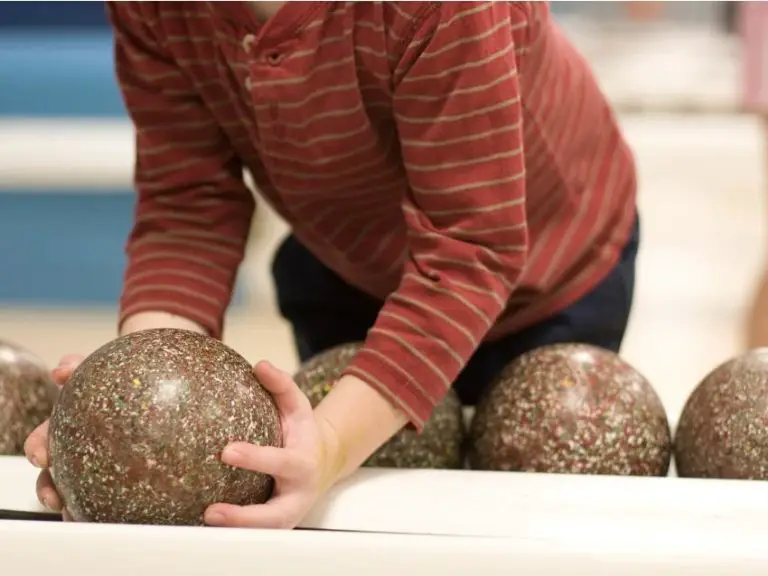Is Duckpin Bowling Still Around? Exploring the Current State of the Game
Duckpin bowling is a unique variation of bowling that has been around for over 100 years. It was invented in 1900 in Baltimore, Maryland, and quickly gained popularity in the Northeastern United States. However, many people wonder if duckpin bowling is still around today.
The answer is yes, duckpin bowling is still played today, but it is not as popular as it once was. According to the National Duckpin Bowling Congress (NDBC), regulation duckpin bowling is played in nine states, including Maryland, Connecticut, and Rhode Island. Non-regulation “mini-duckpin” bowling is played in additional locations. Duckpin bowling has rules similar to ten-pin bowling, but the pins are shorter and fatter, and the balls are smaller and lighter.
Despite its decline in popularity, duckpin bowling still has a dedicated following of enthusiasts who appreciate its unique challenges and fun atmosphere. Duckpin bowling alleys can be found in various locations across the United States, and many offer leagues and tournaments for players of all skill levels. Whether you are a seasoned bowler or a beginner, duckpin bowling is a fun and exciting sport that is worth checking out.
The History and Evolution of Duckpin Bowling
Duckpin bowling is a variation of ten-pin bowling that has been around since the late 1800s. Over the years, it has undergone several changes, and its popularity has fluctuated. In this section, we will explore the history and evolution of duckpin bowling.
Origins and Founders
The origins of duckpin bowling are somewhat disputed. Some sources attribute its invention to a group of Baltimore Orioles players, including John McGraw and Wilbert Robinson, who were looking for a way to pass the time during the offseason. Others claim that it was invented by a group of Massachusetts bowlers who were looking for a way to make the game more challenging.
Regardless of its origins, duckpin bowling quickly caught on and spread throughout the East Coast. The National Duckpin Bowling Congress was founded in Baltimore in 1927 to promote the sport and establish a set of rules.
Growth and Decline
Duckpin bowling enjoyed its heyday in the 1950s and 1960s, with thousands of alleys throughout the East Coast. However, the rise of ten-pin bowling and other forms of entertainment led to a decline in popularity. Many alleys closed, and the sport was in danger of dying out.
Modern Revival
In recent years, there has been a renewed interest in duckpin bowling. The Baltimore Sun and The New York Times have both run articles on the sport, and there are now over 40 alleys throughout the country. While it may never reach the heights of its heyday, duckpin bowling is still around and enjoyed by many.
In conclusion, duckpin bowling has a rich history and has undergone many changes over the years. While its popularity has fluctuated, it has managed to survive and even thrive in recent years. If you’re looking for a fun and challenging alternative to traditional bowling, duckpin bowling is definitely worth checking out.
The Rules and Scoring of Duckpin Bowling
Playing the Game
Duckpin bowling is a variation of standard 10-pin bowling, played with smaller balls and 10 shorter, stocky pins. The game is played with three balls per frame, and each player gets ten frames per game. The objective of the game is to knock down as many pins as possible with each roll.
In duckpin bowling, you may not cross the foul line when delivering the ball. If you do, it is considered a foul, and you will not receive any points for that roll.
Scoring System
Scoring in duckpin bowling can be a little difficult to understand at first, but it’s not too complicated once you get the hang of it. Here are a few rules you need to know upfront:
- You’ll roll three duckpin balls each turn, also called a frame.
- If you knock down all ten pins with your first roll, it’s called a strike, and you’ll receive ten points plus the total number of pins knocked down with your next two rolls.
- If you knock down all ten pins with your second roll, it’s called a spare, and you’ll receive ten points plus the total number of pins knocked down with your next roll.
- If you don’t knock down all ten pins with your first two rolls, you’ll receive one point for each pin knocked down.
- The maximum score for a single frame is 30 points, which is achieved by rolling three strikes in a row.
To keep track of the score, you can use a scorecard, which is usually provided by the bowling alley. The scorecard will have ten frames, and you’ll need to record the number of pins you knock down with each roll.
In conclusion, duckpin bowling may have a different set of rules and scoring system, but it’s still a fun and challenging game to play. With a little practice, you’ll be able to master the game and impress your friends with your skills.
Duckpin Bowling Alleys and Locations
If you’re wondering whether duckpin bowling is still around, the answer is a resounding yes! While the sport may not be as popular as it once was, there are still plenty of duckpin bowling alleys and centers throughout the United States where you can enjoy this unique game.
Historic Alleys
While there are still plenty of historic duckpin bowling alleys around, there are also many contemporary duckpin bowling centers that offer a more modern take on the sport. For example, the Patterson Bowling Center in Baltimore, Maryland, is a popular destination for both casual and competitive bowlers. The center boasts 12 duckpin lanes and is known for its friendly staff and welcoming atmosphere.
Contemporary Duckpin Bowling Centers
Some of the oldest and most historic duckpin bowling alleys can be found in states like Rhode Island, Massachusetts, and Pennsylvania. For example, the Arcade in Providence, Rhode Island, has been around since 1885 and is considered one of the oldest continuously operating duckpin bowling alleys in the country. Meanwhile, the Lucky Strike Lanes in Boston, Massachusetts, has been a popular destination for duckpin bowlers since 1963.
Other popular contemporary duckpin bowling centers include the AMF Southwest Lanes in Linthicum, Maryland, and the Walkersville Bowling Center in Walkersville, Maryland. Both of these centers offer a range of amenities, including arcade games, food and drink options, and league play.
Whether you’re looking for a historic duckpin bowling alley or a modern duckpin bowling center, there are plenty of options to choose from. So why not grab some friends and head to your local duckpin bowling alley or center for a fun and unique experience?
Cultural Impact and Future of Duckpin Bowling
Popularity and Cultural Significance
Duckpin bowling has been around for over a century, and it has had a significant impact on American culture. The sport was first introduced in Baltimore, Maryland, in the early 1900s, and it quickly became popular throughout the East Coast. Today, duckpin bowling is enjoyed by people of all ages and backgrounds, and it is played in bowling alleys across the country.
One of the reasons for the sport’s popularity is its unique and fun nature. Unlike traditional ten-pin bowling, duckpin bowling uses smaller pins and balls, which makes it more challenging and exciting. The smaller pins require greater accuracy, and the smaller balls make it easier for kids and beginners to play.
Duckpin bowling has also had a significant impact on the social scene. Many bowling alleys have leagues and tournaments, which provide opportunities for people to socialize and make new friends. Additionally, duckpin bowling has been featured in popular culture, including movies like “Thunder Alley” and “The Perfect Game,” and TV shows like “Atomic Bowl” and “Power Players.”
The Future of the Sport
Despite its popularity, duckpin bowling has faced some challenges in recent years. The sport has struggled to attract younger players, and many bowling alleys have closed due to declining interest. However, there are still many people who are passionate about the sport, and they are working to keep it alive.
One way that duckpin bowling is evolving is through the use of technology. Many bowling alleys now have automatic pinsetters, which eliminate the need for pin boys. Additionally, some bowlers are experimenting with new variations of the sport, such as using balls with finger holes or playing with smaller pins.
In conclusion, duckpin bowling has had a significant impact on American culture, and it is still enjoyed by many people today. While the sport may face challenges in the future, there are still many people who are passionate about it, and they are working to keep it alive. It will likely never be an Olympic level sport, but duckpin bowling is a fun and challenging sport that is worth checking out.





